Serama Bantams
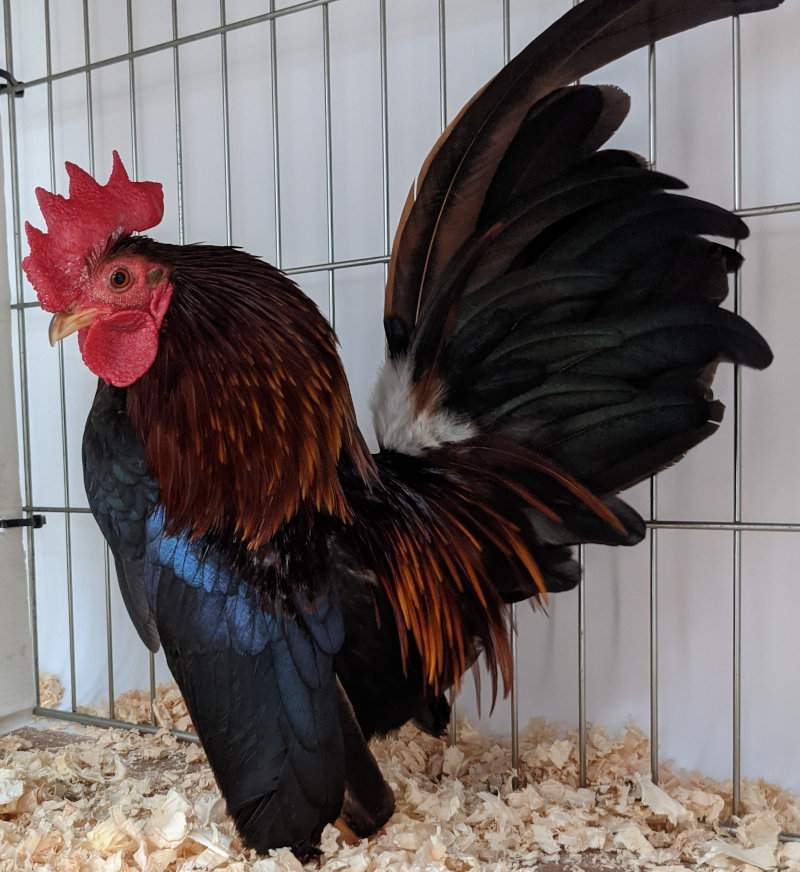
Table of Contents
- What is special about the Serama bantam?
- Overview of the Serama breed:
- Feeding the Serama bantam:
- What colours of Serama bantams exist?
- A brief history of the Serama breed:
- Tips for Serama bantam care:
- Serama bantam types:
- Serama bantam facts:
- Can you keep Serama bantams indoors?
- Can you keep Serama with other pets?
- How often should you train a Serama bantam?
- Are Serama cockerels different?
- Do Serama have special needs?
- Can you keep Serama bantams in a cage?
- Are Serama easy to keep?
- Where to get Serama bantams and how much to pay for them:
What is special about the Serama bantam?
The wonderful, tiny, Malaysian Serama, also known as the Ayam Serama is named after Raja Sri Rama a mythical character from shadow puppet plays. The Malaysian Serama is one of the rarest breeds of chickens in the world and are the smallest chicken and lightest chicken in the world.
There are many different "styles" or "types" of Serama.
The main difference between a Serama and a regular chicken is their size. Serama are very small so they need to be kept safe from predators, and also kept warm.
Below: A Serama cockerel strutting his stuff.
Serama chickens make beautiful pets and companions, both indoors and outdoors. Their small size requires very little space and a pair or trio can comfortably be caged in a 3 foot by 2 foot enclosure. They should only be let out of their cages when they are safe from predators such as dogs, cats and birds of prey.
Overview of the Serama breed:
Serama chickens are inexpensive to rear as they consume only about one pound of feed per month, eating regular chicken feed, a 50/50 mixture of game bird breeder feed and chicken crumbles.
A little whole or cracked grains may be fed weekly as a treat. The hens make great mothers, laying, hatching and caring for baby chicks. Incubation period for eggs is 19-20 days.
Below: A Serama bantam, showing all the attitude of the breed.

These birds are not colour bred, nor do they breed true to any one colour. It is not uncommon to hatch as many different coloured chicks as there are eggs that hatch.
Serama do not breed true to size. Out of a clutch of 10 chicks, one can expect one or two to be very small, two or three to be rather large and the remainder to be within the normal size range.
They are year-round layers and have no particular laying season, although peak fertility and egg production occurs fin spring.
There is a wide range of different chicken egg colours from a Serama, ranging from the purest white to the deepest brown, with dozens of shades in between.
Serama bantams mature at 16-18 weeks, and are in a continuous moult, dropping a few feathers each day. It takes approximately five Serama eggs to equal the volume of one Grade “A” Large egg.
Below: A Serama bantam, the smallest chicken.
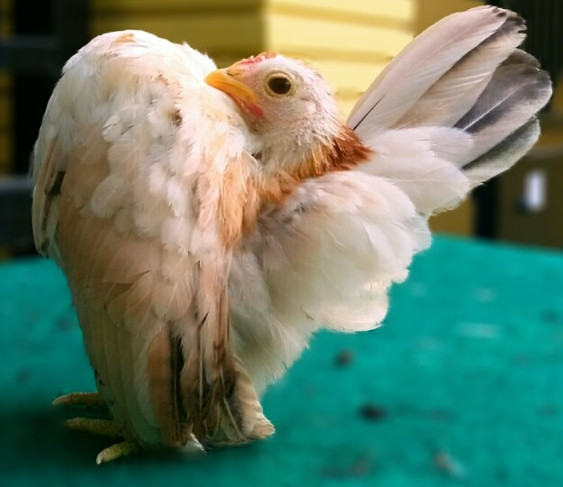
Make sure that when the weather is bad outside, you have a suitable place for them to go into. This can be a coop, a shed, or a partition of a building. Make sure that inside is warm, dry and free from parasites.
I advise using wood shavings, as the birds do not ingest them, they are easy to clean, and they last a long time. The Serama is a very personable little bird, and thrives on human interaction. Make sure you spend some time with your birds, they and you will both love it.
Feeding the Serama bantam:
Serama can eat regular chicken feed, but I have found that they do better on crumbles or mash, rather than pellets. There size means they need smaller food or grains or grains that have been rolled or broken. My opinion is they need a slightly higher protein than full size birds.
They should also have free choice grit and oyster shell. They enjoy being on pasture and will peck at the tips of grasses like most chickens. Treats may be fed.
Because of their diminutive size and short legs they are easier to keep in a garden and will not do as much damage as other chickens.
Below: A Serama flying.

Serama can fly like any other chicken and will do occasionally.
I highly recommend letting your birds range in a confined area during the day, because I have found that this boosts fertility and general health tremendously. The birds love it, and are more contented, and better producers.
What colours of Serama bantams exist?
Serama come in over 2500 documented colours.
They do not breed true which means that breeding two colours together does not result in any one colour offspring, and it is not uncommon to hatch out a clutch of chicks and have each one differently coloured.
My colours depend on what I hatch that year, and are purely random.
The Serama does not breed "true" means two things. Any pair of Serama, can produce any of over 2500 documented colour varieties.
Breeding a black bird to a black bird does not mean you will get black offspring. This is yet another reason why the Serama is so fun, because you never know what you will get! Serama also do not breed true to size, meaning that if you take a Class A bird and breed it to another Class A bird, you could get birds that are either Class A, B, or C.
Although Serama are not your common everyday chicken, they are no harder to raise then any other quality bantam.
The Serama has started to become more popular in recent years, and unfortunately some people are getting the wrong idea about the breed. The Serama is merely another breed of poultry that happens to be quite small. They should be treated no differently than any other bantam, and people need to know this.
Below: Malaysian Serama, more than 2500 colours are known.

The Malaysian Serama is always a proud bird.
There are, of course, a few problems surrounding this breed. People seem to be pulled into this breed to make money and this is most definitely the wrong reason.
It has inherited the fatal recessive gene from the Japanese bantam that means that 1 in 4 eggs won’t hatch even if it is fertile. The legs are just too short.
Is it for the money or is it for the bird? If it’s for the money then back out, it will be best for everyone associated with the Serama otherwise the breed will suffer.
Breeding methods seem to be a key point in debates about the Serama these days. There are a few individuals who are breeding these birds correctly and who maintain pure flocks, but some of the other breeders who apparently are selling Serama are in fact selling crosses. Many of these crosses coming from Serama X Old English Game Bantams, and Serama Japanese or Chabo bantams.
Below: Serama cockerel.
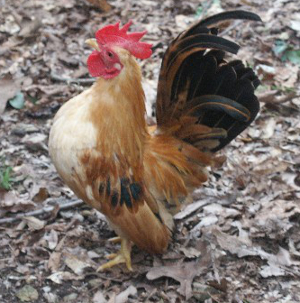
As with any breed buyers should be aware of who they are dealing with and who has pure stock before they part with their money. Serama clubs are in the process of creating a breeders directory that lists the breeders of pure Serama.
I know that some breeders have enough of a sense of ethics, and animal care responsibility to house them like any other breed would be housed and I appreciate those breeders. I would encourage any new buyers to buy from them, because they clearly show that they have the breeds' and the individual bird's best interest at heart.
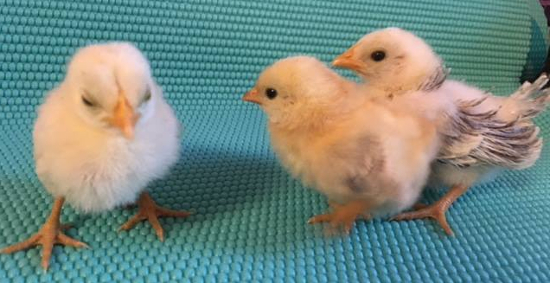
Above and Below: Day old Serama chicks.
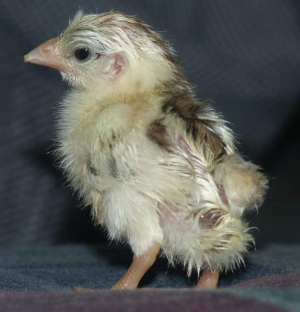
Serama, also commonly known as the Ayam Serama or Malaysian Serama, were developed in the state of Kelantan, Malaysia. They are the result of crossing some local bantams there, including what is believed to be Japanese (Chabo).
Serama are commonly called the smallest chicken in the world, which is indeed true. Class A Serama are very small and light weight, and as such are regarded as the lightest chickens in the world.
Serama are relatively new to the USA, having been imported in the year 2000. They were imported by two separate individuals. I have both lines of birds that were imported.
Serama Bantams are currently being bred to a Standard of Perfection, based on the Standard that was developed in Malaysia. For more information, check out the Serama Standard. There have already been several Serama Shows here in the USA with more to hopefully follow. For more information check out the National Serama Club and Registry
If you are interested in keeping Malaysian Serama you will need to ask yourself if you can meet a few basic requirements. Can you keep them warm and protected from the elements?
It is a common misconception that Serama need to be kept at temperatures above 30 degrees. This is not entirely true. yes, Serama are small, but if properly acclimated, they do quite well in colder climates as long as they have shelter from the wind and rain and snow.
Can you keep them safe from predators? Serama need to have comfortable housing safe from predators. They enjoy time outside, and truly benefit from living the way chickens were meant to live. Are you prepared to take on a relatively new breed and the challenges that come with it?
A brief history of the Serama breed:
The name Serama comes from a mythical character from a historical play made famous by its beauty, majesty and regal bearing. Wee Yean Een decided to name the breed Serama after Raja Sri Rama a mythical character from shadow puppet plays, which Wee Yean Een loved to watch as a child.
The Serama originated in Malaysia. The precise history is a little vague, although some experts suggest that records run right back to the 1600's, but this is simply not true, the Serama bantam is a very modern breed of chicken.
Much of the recent records and credit for the Serama from that we see today comes from the Malaysian breeder Wee Yean Een, who began his work back in the 1970s. By the cross breeding of game (Kapan) and the Silkie bantams, together with a few other secret genes he finally arrived at the down sized Serama.
The Silkie traits of the feathered legs and 5 toes have now been completely bread out. And in 1985 Mr Eea introduced the Japanese bantam into his breeding mix to create more colours and better tail characteristics. The cross, proved a success and he inbred Serama with Serama to lock in the features.
By 1988 the inbred offspring were breeding true and weighing less than 500 grams. The first Serama show took place in Malaysia in 1990 and the breed has gone from strength to strength mainly due to their temperament, beauty and the conformance of these wonderful little birds.
Serama are now so popular in Malaysia that Serama shows are held every weekend through out the year averaging 300-400 entries.
Tips for Serama bantam care:
- Serama are a specialist bird and require warm draught free living quarters
- They must be protected from ALL cold temperatures.
- Serama also crave human attention just like a cat and dog, and must be handled everyday.
- Their eggs are not easy to incubate; because of their size they can have problems hatching you must keep a constant eye on the humidity and have a dampened cloth under the egg.
- Also Serama’s can carry a lethal gene in them called the 'diluted gene', which comes from the Japanese bantam, this means that chicks, could die 24 hours after hatching, or die prematurely (not for the light hearted).
Serama bantam types:
The type is the outline of the bird or "silhouette" and this is particularly important with the Serama. It is the general form of the overall bird and distinguishes the bird at a glance with it's upright tail, high prominent breast, low wing and head held far back nearly against the tail.
The overall effect of tail and neck/head is of a V shape. The back should be very short and nearly completely covered by the hackle and saddles so as to appear nearly nonexistent.
Typical Malaysian Serama Types are Slim, Ball, Apple, and Dragon. Slim is a relatively tall, slender bird with a very small breast. This type looks as though it could fit into a cylinder without problem. Ball are quite round in appearance. The legs are short and the wings are not held at vertical, but closer to 45 degrees or less, due to wing and leg length.
Class 1 Serama have to be 350 grams or less for a male and no more than 7.5 inches tall
For a Class 1 Serama female the weight must be less than 325 grams and less than 5.5 inches tall
The Serama is the smallest and proudest chicken in the world. Some people believe them to look like little soldiers, especially when in pose mode. Due to there size, temperament and friendliness a lot of people in Malaysia keep them in their houses as house pets.
The Serama come in 3 classes. (Classes A, B or C in Malaysia or) Classes 1,2 and 3 in the EU. This refers to their size, weight, people friendliness and conformity.
Serama bantam facts:
- The Serama hen lays all year round, but her prime laying time is Spring and Summer.
- The Serama are in a year round moult, each day you will find dropped feathers.
- Serama come in over 2500 documented colours
- The Serama egg colour ranges from white to the darkest brown
- To equal the volume of a large grade ‘A’ egg you will need 5 Serama eggs.
- Serama incubation takes 19-20 days
- The Serama can mature in 16 – 18 weeks
- The Serama are a tropical bird and must be protected from drafts and cold temperatures at all times
- The crow of a Serama cockerel is one third the volume of a regular crow
- When hatching Serama chicks, it is not uncommon to have as many different coloured chicks as there are eggs
- In Malaysia Serama are the most popular house hold pet, out numbering dogs and cats!
Can you keep Serama bantams indoors?
Yes, you can keep Serama bantams indoors.
Everywhere around the world people keep Serama as indoor pets, letting them walk about the house.
If you are living in a house like me without central heating, then it is not advised, until this breed properly acclimatises, they really need a temp above 15C to thrive.
If you do keep them indoor’s then I advise you to clip their toe nails frequently, as Serama get their feet stuck in the carpet and rugs, they can spend hours attached to the carpet if you don’t keep an eye on them!
Can you keep Serama with other pets?
Yes, you can keep Serama bantams with other small chickens and well trained dogs.
If you bring a kitten up with Serama they become really good friends, and the cats give the Serama a free run of the house.
Serama perch on anyone they form a bond with, some one they trust. Other peoples cats may make a meal of your chickens so be careful.
I advise not to keep Serama with any chickens over the normal bantam size.
How often should you train a Serama bantam?
I train my chicks everyday, as it takes them a long, long time to perfect this skill.
I start at about 2 weeks old first I teach the chicks just to stand on the carpet, as Serama are very good squatters when they are tiny. This takes them a month to get, then it’s the tail and chest.
At this age it’s very easy to train Serama, as they just stand there. Then it’s just this movement over and over, patience is needed as when they get 3 months and over they want to run around everywhere, they will not give in unless you are persistent, because they are very curious birds and want to explore everything.
Are Serama cockerels different?
The Serama bantam crow is one third less than a normal crow, although nothing about the Serama bantams voice is chicken like! It is very high. Serama roo’s look after their flock, making sure the hens eats first.
If a hen were to go broody, lay eggs and then hatch them, the chick wouldn’t only go to mum, the flock would take it in turns to look after the chick, this includes the roo.
I’ve also found that Serama roo’s aged 3 weeks plus also do their bit with other Serama chicks.
Well, I’ve been told they can have nasty fights, but that’s only when there seems to be a hen involved. Males that have grown up together without hens will be fine together although there will always be squabbles and disagreements.
So I advise you to get a roo and hen or two rather than 2 roosters just in case, as you don’t want to risk anything with such a delicate breed.
Also the Serama roo goes through a difficult stage of dominance from ages 3 months to 4 and a half months. This is where the Serama roo show’s the hen who's in charge, and if your not careful, and pick them up when they are presenting to a hen your finger nail could get a peck! If this does happen then pick them up in one hand and stroke their head, this will relax them instantly!
But not to worry because this is a natural phase they go through, it’s not because they decided they don’t like you, I promise!
Do Serama have special needs?
On a weekly basis, The Serama will require food, they do not eat much, a big sack of bird food for my 14 chickens will cost £10 & lasts them a month.
They need water, a warm and draught free living environment and handling. I give them an hour plus a day. Training takes about 30 mins each day.
They need their toe nails clipped once a week to stop toe injuries.
Can you keep Serama bantams in a cage?
Yes! I’ve heard of some people who keep their show Serama in a cage 3 foot by 2 foot but I recommend more than this with perches, two levels, treats, toys and a dust bath. All chickens like to wander, scratch and peck and you should allow your Serama bantams the same privileges.
But one night when I had a power cut and put my Serama chicks in heated cages 30cm by 30cm each, and they were not as happy as they could be, I advice a bigger cage, as Serama like to have a wonder and scratch around the paper!
Are Serama easy to keep?
Serama are actually very easy to care for, provided that you have the time, and willingness to do so. If you recognise that the birds health, happiness and well being must be first and foremost, then your enjoyment will come automatically.
The main difference between a Serama and a regular chicken is their size. Serama are very small so they need to be kept safe from predators, and also kept warm.
I highly recommend letting your birds range in a confined area during the day, because I have found that this boosts fertility and general health tremendously. The birds love it, and are more contented, and better producers.
Just make sure that when the weather is bad outside, you have a suitable place for them to go into. This can be a coop, a shed, or a partition of a building. Make sure that inside is warn, dry and free from parasites.
I highly advise using sand or wood shavings, as the birds do not ingest them, they are easy to clean, and they last a long time. The Serama is a very personable little bird, and thrives on human interaction. Make sure you spend some time with your birds, they and you will both love it.
Serama eat regular chicken feed, but I have found that they do better on crumbles or mash, then on pellets. They should also have free choice grit and oyster shell. Treats may be fed in the form of grapes, bread, corn, and meal worms for example.
The Serama does not breed "true" meaning two things. Any pair of Serama, can produce any of over 2500 documented color varieties. Breeding a black bird to a black bird does not mean you will get black offspring.
This is yet another reason why the Serama is so fun, because you never know what you will get! Serama also do not breed true to size, meaning that if you take a Class A bird and breed it to another Class A bird, you could get birds that are either Class A, B, or C.
Although Serama are not your common everyday chicken, they are no harder to raise then any other quality bantam. Enjoy!
Where to get Serama bantams and how much to pay for them:
In conclusion, I hope that this will help inform some fanciers about some of the problems with this breed and some of its breeders, and what some current breeders should take into consideration.
I also hope that if you are looking to buy a Serama you have become more informed as to how to choose a good breeder.
